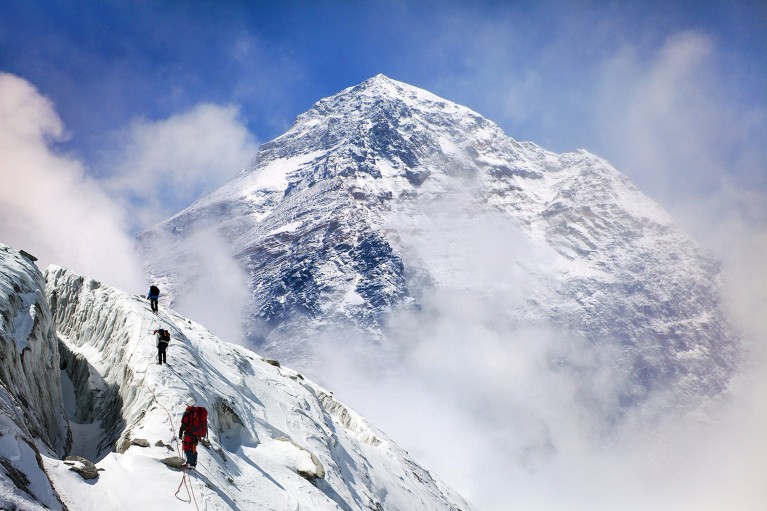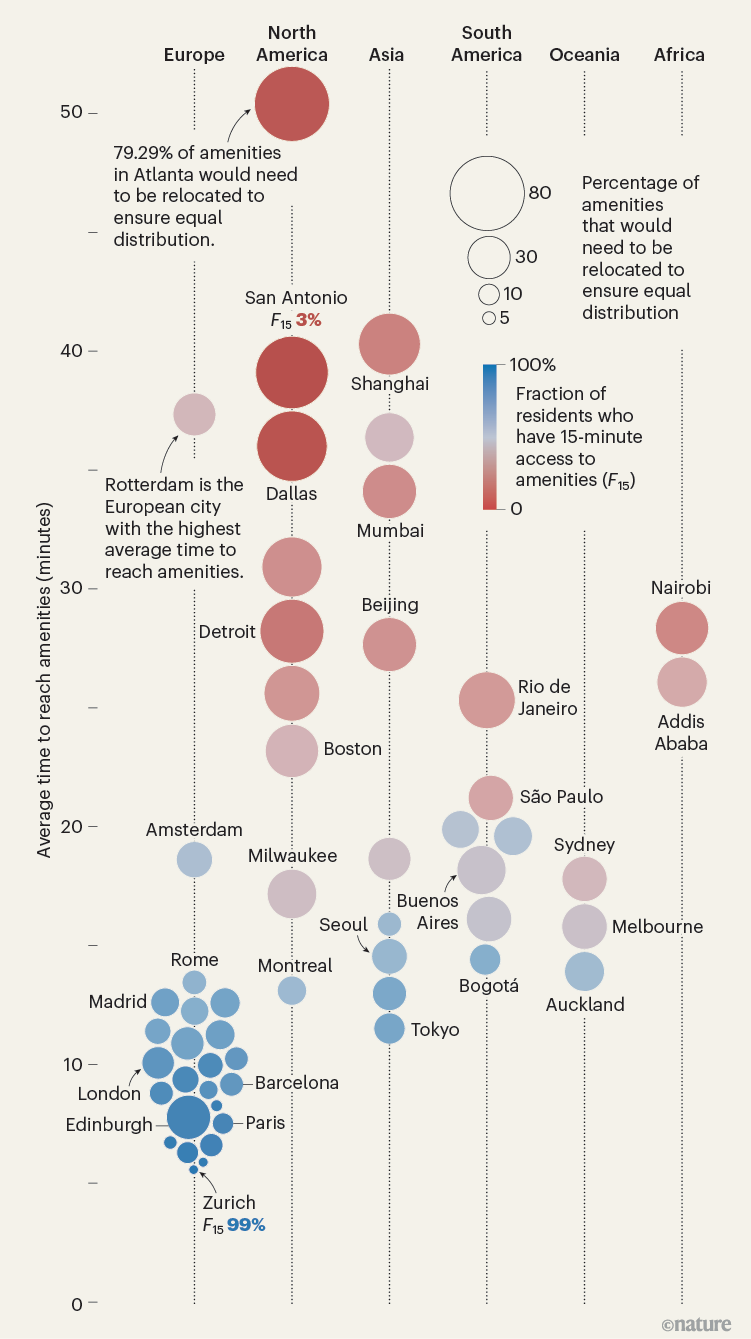Hello Nature readers, would you like to get this Briefing in your inbox free every day? Sign up here.

Mount Everest is unusually high, even when compared with other mountains in the Himalayas.Credit: Daniel Prudek/Getty
Mount Everest’s superlative height might be thanks to a river that cuts through the Himalayas. The Arun River sits in a dramatic gorge, and researchers think it eroded its way through the mountain range around 89,000 years ago, until merging with another river — an event they call ‘river piracy’. The resulting erosion removed so much rock and soil that Everest has rebounded upwards by as much as 50 metres. Other researchers remain sceptical, because the long-term rates of tectonic uplift and erosion the team used to estimate the boost aren’t well understood.
Reference: Nature Geoscience paper
Last week, we heard that a part of the infamous Three Mile Island nuclear power plant in the United States will be reopened to feed Microsoft’s hunger for low-carbon power. And it’s not alone: the Palisades Nuclear Plant in Michigan is also on track to be rebooted, partly thanks to US government climate loans. But flipping the on-switch on a decommissioned reactor is no small feat. They’ll need to be refuelled with uranium and every system will be scrutinized for corrosion or other defects.
The love nests that male great bowerbirds (Chlamydera nuchalis) build to tempt females are decorated with material from their surroundings — and expertly engineered for sound. The birds advertize their availability with a loud call. Ecologists joined forces with an audio expert to show that the shape of a tunnel section called an avenue amplifies their song, and the presence of decorative objects alters sound frequencies to impress females.
Reference: Behavioural Ecology paper
Astronomers have developed a machine-learning algorithm to detect the bright streaks left by satellites in images of the night sky. The model makes the data easier to interpret and could allow their removal. “There is no person who can look at all of the images that are being recorded every night and detect the streaks,” says astrophysicist Siegfried Eggl. “This is where machine learning can help.” Satellite launches and developments are moving at “breakneck speed”, including a planned 12,000-satellite megaconstellation called G60 Starlink, and even with AI assistance, researchers might struggle to keep up.
Features & opinion
The non-profit plasmid repository Addgene is celebrating two decades of helping scientists to share and access these crucial life-science DNA tools. Researchers who develop a popular plasmid can offload the hassle of handling requests to Addgene for free. Meanwhile, scientists who order these reagents can count on receiving materials on time and up to standard. Addgene has accelerated the development of groundbreaking technologies such as CRISPR-Cas9 gene editing, prime editing (which uses RNA to guide Cas9 to a specific site in the genome) and tools for studying the SARS-CoV-2 virus.
Plastic pollution is creating a ‘plastisphere’: a widespread habitat that includes pathogenic viruses and antimicrobial-resistant bacteria, a group of environmental researchers highlights. The problem has no easy fix, but the ecosystems of the plastisphere must be thoroughly studied, with consistent sources of funding and backing from policymakers, if we’re to mitigate the risks posed by the pathogens lurking within.
Prominent brain scientist Eliezer Masliah, who was the influential head of the Division of Neuroscience within the US National Institutes of Health (NIH), is one of the most-cited researchers in his field. But some of the studies he co-authored are “riddled with apparently falsified Western blots — images used to show the presence of proteins — and micrographs of brain tissue”, concludes a Science investigation. The NIH says it has “made findings of research misconduct” in two of Masliah’s publications. Masliah did not comment.
The shocking news raises concerns about the validity of certain drug-development efforts for Alzheimer’s and Parkinson’s diseases, particularly for an antibody called prasinezumab. “All four of the fundamental papers about prasinezumab (as cited on the web site of its developer, Prothena) are full of manipulated images,” writes medicinal chemist Derek Lowe. “This is just a horrible situation in every direction.”
Science investigation | 20 min read & Science column | 4 min read
Infographic of the week

Jasiek Krzysztofiak/Nature
How walkable is your city? Researchers have built an online platform to assess how close metropolises of the world are to the hypothetical ‘15-minute city’: one in which residents can access essential amenities on foot or by bike in 15 minutes or less. The model shows that European cities most closely resemble the ideal, with Zurich an almost perfect example. US locales need the most adjustment from their current set-ups to fit the mould, with residents of Asian cities Shanghai and Mumbai also needing to travel over 30 minutes on average for amenities. (Nature News & Views | 3 min read, Nature paywall)Reference: Nature Cities paper (Jasiek Krzysztofiak/Nature)
As we warm up for the Nobel Prize announcements next week, I’m enjoying hearing from chemistry laureates about how it felt to get science’s most high-profile gong. Sounds like e-mail triage becomes a big issue in life. Oh, and if you get a call next week from a Swedish number, for gosh sakes, answer it.
I look forward to triaging your e-mails in the Briefing inbox— please send your feedback on this newsletter to [email protected].
Thanks for reading,
Flora Graham, senior editor, Nature Briefing
With contributions by Jacob Smith
Want more? Sign up to our other free Nature Briefing newsletters:
• Nature Briefing: Careers — insights, advice and award-winning journalism to help you optimize your working life
• Nature Briefing: Microbiology — the most abundant living entities on our planet — microorganisms — and the role they play in health, the environment and food systems.
• Nature Briefing: Anthropocene — climate change, biodiversity, sustainability and geoengineering
• Nature Briefing: AI & Robotics — 100% written by humans, of course
• Nature Briefing: Cancer — a weekly newsletter written with cancer researchers in mind
• Nature Briefing: Translational Research — covers biotechnology, drug discovery and pharma


